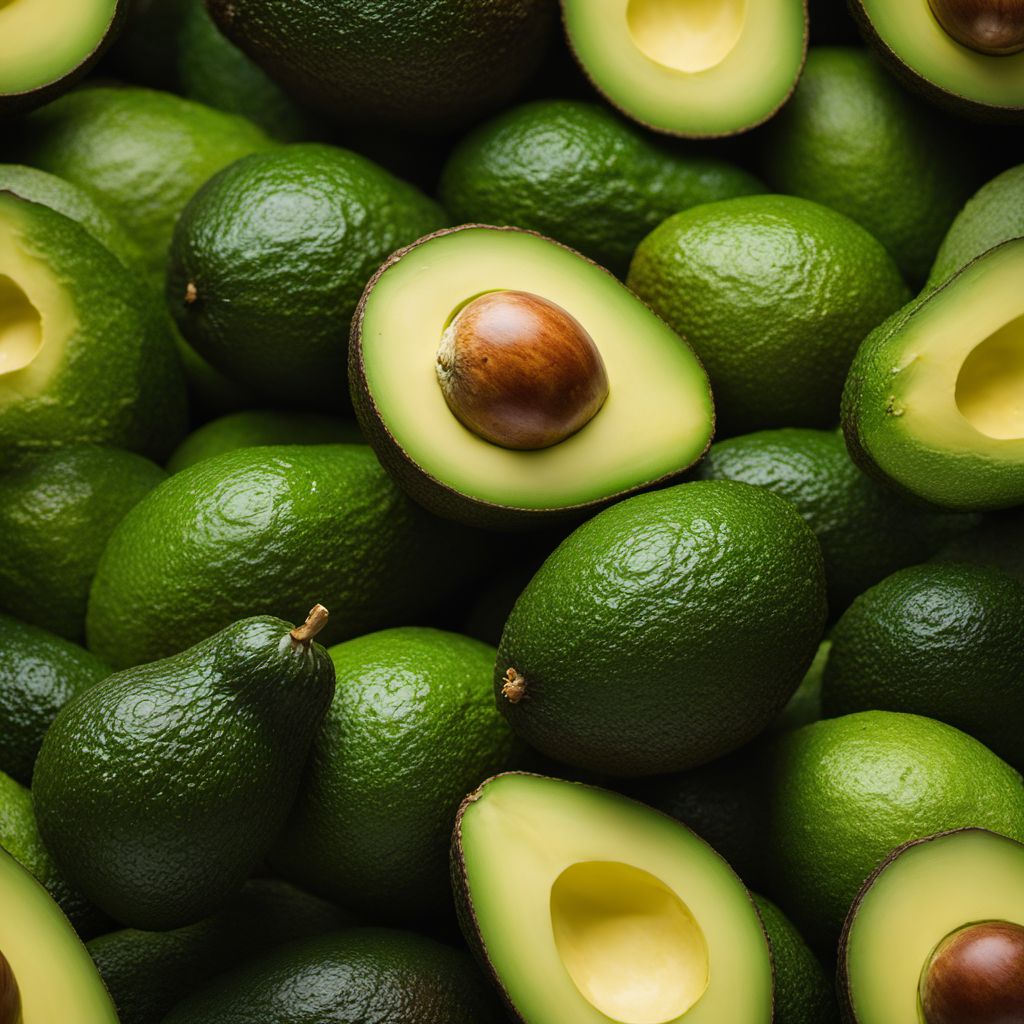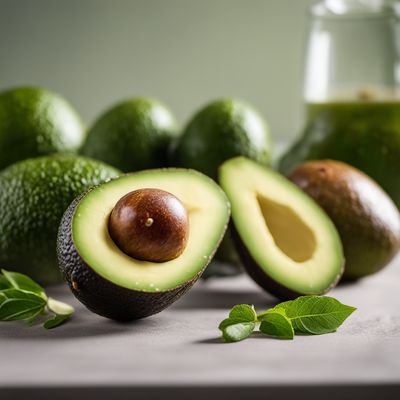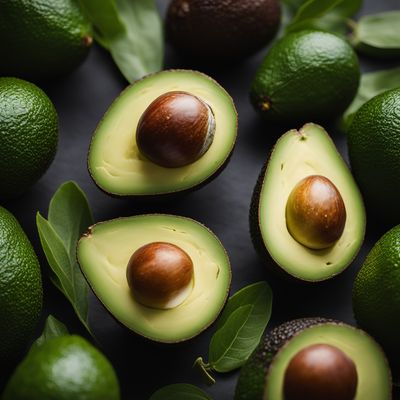
Ingredient
Avocados and similar-
The Creamy Marvel: Avocados and Similar
Avocados are oval-shaped fruits with a dark green, bumpy skin that turns black when fully ripe. The flesh is buttery and smooth, with a mild and nutty flavor. The texture is creamy and can range from firm to soft, depending on the ripeness. Avocados are visually appealing, with a vibrant green color and a large central seed.
Origins and history
Avocados are native to Central and South America, with Mexico being the primary producer. They have been cultivated for thousands of years and were highly valued by the Aztecs and Mayans. Avocados were later introduced to other regions, including California and Florida, where they are now grown commercially. Today, avocados are enjoyed worldwide and are a key ingredient in dishes like guacamole, salads, and sandwiches.
Nutritional information
Avocados are a nutrient-dense fruit, rich in healthy monounsaturated fats, fiber, and various vitamins and minerals. They are also a good source of potassium, vitamin K, vitamin E, and folate. A medium-sized avocado contains approximately 230-250 calories.
Allergens
Avocados are not known to be allergenic, but individuals with a latex allergy may experience cross-reactivity and should exercise caution when consuming avocados.
How to select
When selecting avocados, gently squeeze the fruit to check for ripeness. Ripe avocados should yield to gentle pressure but should not be overly soft or mushy. The skin should be free from major blemishes or bruises. If you plan to use the avocado immediately, choose one that is slightly soft. If you prefer a firmer texture, select an avocado that is still firm to the touch.
Storage recommendations
To ripen avocados, place them in a paper bag at room temperature. Adding a ripe banana or apple to the bag can speed up the ripening process. Once ripe, avocados can be stored in the refrigerator to slow down further ripening. Cut avocados should be stored in an airtight container with a squeeze of lemon or lime juice to prevent browning.
How to produce
Avocado trees can be grown in regions with a tropical or subtropical climate. They require well-drained soil and plenty of sunlight. Avocado trees can be propagated from seeds, but it is more common to purchase grafted trees for home cultivation. It takes several years for an avocado tree to start producing fruit.
Preparation tips
Avocados can be sliced, diced, or mashed to be used in a variety of dishes. They are commonly used in salads, sandwiches, and wraps. Avocado toast has also gained popularity in recent years. In addition, avocados are a key ingredient in guacamole, a traditional Mexican dip. They can also be used in smoothies, desserts, and even as a substitute for butter or oil in baking recipes.
Substitutions
Butter pears and alligator pears are suitable substitutes for avocados in most recipes. They have a similar creamy texture and mild flavor. However, their availability may vary depending on the region.
Culinary uses
Avocados are incredibly versatile and can be used in a wide range of culinary applications. They are commonly used in Mexican cuisine, where they are featured in dishes like tacos, enchiladas, and salsas. Avocados are also popular in salads, sushi rolls, and as a topping for burgers and sandwiches. Their creamy texture makes them a great addition to smoothies and desserts, such as mousse and ice cream.
Availability
Avocados are cultivated in many countries around the world, including Mexico, the United States, the Dominican Republic, Peru, and Colombia. They are also imported and consumed in various other regions, such as Europe, Asia, and the Middle East.

